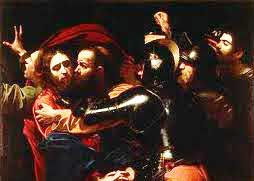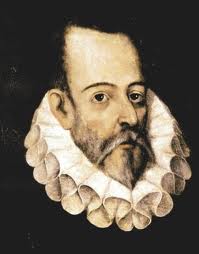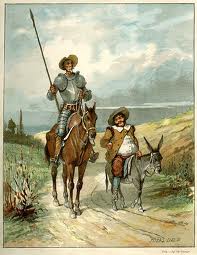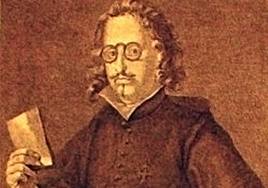Spanish Narrative of the Baroque

If it is true, as some critics have proposed, that the history of Western art can be traced back to the tension between the more restrained, balanced characteristics of a given period, contrasted to the effusive expression of its contrary, then it could easily be argued that the temperament of Spanish artists has usually flourished during the latter epochs.
For no comprehensive artistic movement is less restrained in emotional expression, and no other period of time would be more fruitful in the history of Spanish art -literature included- than the Baroque. A time of crisis throughout Europe, largely sparked by the religious stir that resulted from the Protestant Reformations and the subsequent Catholic Counter-Reform, the Baroque aesthetic was particularly well received across Spain, where religion, and soon enough crisis, too, were deeply rooted.
Mysticism

In literary terms, the emergence of an ascetic vein among religious orders, extensively developed in the writings of Saint Teresa of Jesus, Saint John of the Cross and Fray Luis de León, comes as a consequence, no doubt, of the questioning that came from the debate sparked by Luther's Ninety-Five Theses.
But parallel to the mystical tendency prevalent in the monastic life in the peninsula, a different phenomenon was on the rise. This corresponds to the emergence of the novel as the favoured narrative form of the time. In this aspect, Miguel de Cervantes was neither an inventor nor a particularly experimental author, but he would become the most remarkable one.
Pastoral Novel
As a matter of fact, the pastoral novel made its first appearance in the literary map towards the beginning of the XVI century, when Italian writers practically hijacked the theme of traditional poetry and developed the pastoral romance or novel. La Galatea, Miguel de Cervantes' first novel, dated as early as 1585, falls squarely on this genre.
While today La Galatea is interesting primarily as a device to study the early style of possibly the most accomplished writer in Spanish language, other incursions by Miguel de Cervantes into the novelistic style are well worth a read. Among them stand out The Works of Persiles and Segismunda, a Byzantine, or adventure, novel, and The Exemplary Novels, which are shorter tales with a moralistic tone.
Landmarks

Needless to say, the crowning achievement of Miguel de Cervantes was his Don Quixote, published in two parts in 1605 and 1615, respectively. Also an adventure novel, Don Quixote sets out to parody the style of the chivalric novel, but in the process the author successfully manages to adopt the most diverse of voices, ranging from the pastoral to the picaresque, in a comprehensive critique that encompasses both the literary establishment and society at large.
However, while Don Quixote is the most important exponent of Spanish narrative of the XVII century, other important writers emerged at the same time and left their mark in the literary landscape of the time. One of them was Francisco de Quevedo. Although primarily a poet, Francisco de Quevedo is most known today for the one novel he wrote, The Swindler, a picaresque tale with a satirical tone published in Saragossa in 1626 and narrated in the first person.

The other outstanding prose narrator among literary figures in Spain at the time was Baltasar Gracián, a Jesuit priest whose El Criticón was highly regarded as an incisive social critique cloaked in the structure of a Byzantine story told by a cynical and misanthropic narrator. Together with Francisco de Quevedo, Gracián developed a clear and direct narrative style that came to be known as culteranismo.
Within roughly fifty years, the progression of Spanish narrative from Miguel de Cervantes' Don Quixote, to Francisco de Quevedo's The Swindler, to Baltasar Gracián's El Criticón was remarkable, producing world classics that to this day are taught in Spanish courses.
